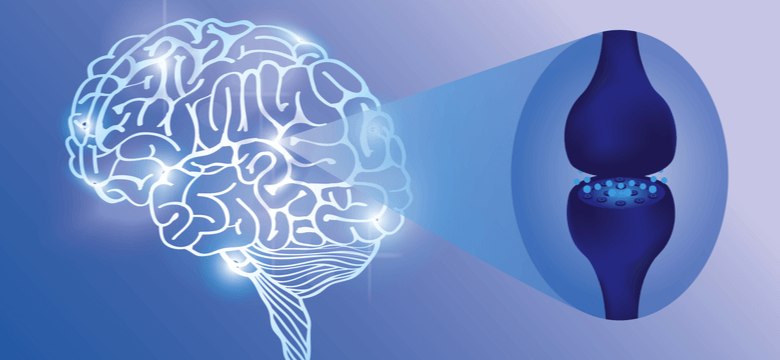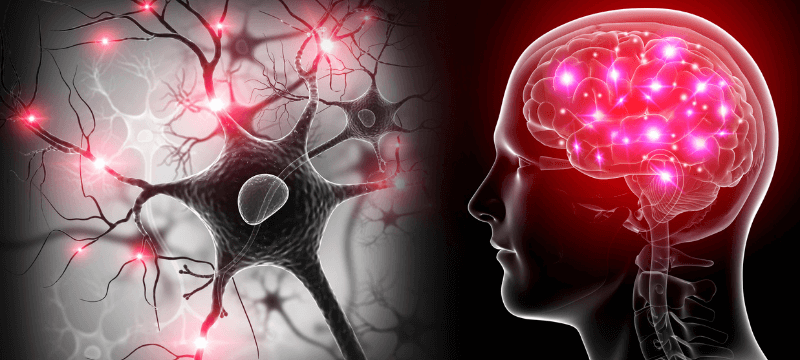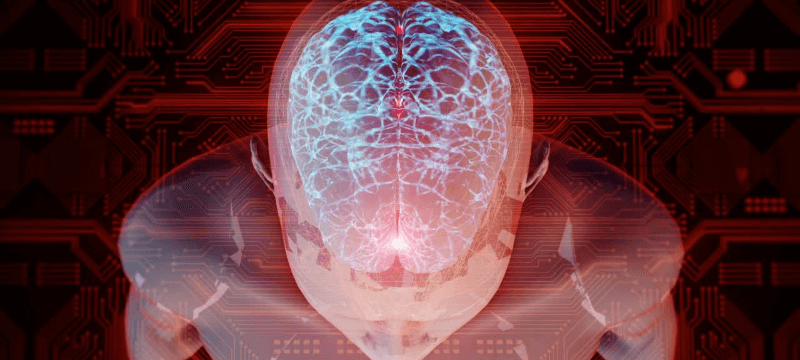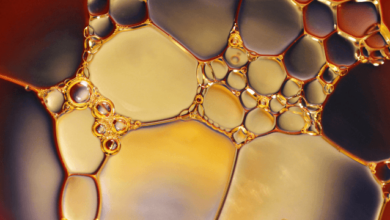
While CBD and THC have become household names, the endocannabinoid system (ECS) is still a mystery to many. Especially the relationship between the endocannabinoid system and the brain.
While a quick Google search will bring up countless information on the ECS, understanding the information can be laborious and time-consuming. Here, we break it down for you, defining the endocannabinoid system and explaining the link between the ECS and the brain, so that you don’t have to sift through endless amounts of research to get a simple understanding of it.
Table of Contents
What is the endocannabinoid system?
The endocannabinoid system is a cell-signalling system that exists in your body naturally and is active even if you don’t consume cannabis. It is one of the most important elements of the body and consists of three parts: endocannabinoids, receptors and enzymes.
Endocannabinoids
Endocannabinoids are molecules created by the body that help regulate the body's internal systems. The body produces endocannabinoids according to its needs – there is no set number generated. These cannabinoids, like the cannabinoids generated by cannabis plants, act to bind receptors.
Currently, we know about two endocannabinoids known as anandamide (AEA) and 2-arachidonoylglyerol (2-AG). AEA and 2-AG are made from molecules created by body cells whenever there is an imbalance in the body. Unlike other molecules made regardless and stored in the body for later use, the body only creates endocannabinoids when there is an express need for them. Endocannabinoids bind to the CB1 and CB2 receptors, which stimulate the ECS.
Amazingly, the endocannabinoid system will function even if the body is not ingesting cannabinoids, as endocannabinoids are naturally produced within the body without the need for any external stimuli.
Cannabinoid receptors
Cannabinoid receptors are neurotransmitter receptors located throughout the body. These receptors remain on the cell surface and monitor the body's environment, transmitting information to the membrane, which responds appropriately and produces the necessary chemicals to restore normal conditions.
There are two cannabinoid receptors in the body: CB1 and CB2 receptors. CB1 receptors are found mostly in the brain, although they can also be present in other areas of the body. Since they outnumber most receptors, CB1 receptors regulate the levels and activity of most neurotransmitters. The prevalence of CB1 receptors in numerous areas of the brain could explain why cannabinoids have the potential to influence various functions such as memory processing and pain.
CB1 receptors interact with THC, a psychoactive compound, and transfer the mind-altering effects of becoming high.
CB2 receptors, on the other hand, are mostly in the body’s immune tissue. They are vital in helping control how the immune system functions.
Enzymes
Metabolic enzymes are in charge of breaking down and destroying endocannabinoids after they have served their purpose. The most important metabolic enzymes are fatty acid amide hydrolase (FAAH), which breaks down AEA, and monoacylglycerol acid lipase (MGL), which breaks down 2-AG. These enzymes are primarily responsible for ensuring that endocannabinoids do not linger in the body longer than necessary.
In a nutshell, endocannabinoids, receptors and enzymes are three ECS components that work together to maintain homeostasis in the body, restore any imbalances, and create the high or relief that comes with cannabis consumption.
What are the functions of the endocannabinoid system?
While there is still much to learn about the endocannabinoid system (ECS), current research shows ECS plays a role in regulating a variety of functions and processes in the body, such as:
- Appetite
- Cardiovascular system function
- Chronic pain
- Digestion
- Fertility
- Inflammation
- Liver function
- Memory
- Metabolism
- Mood
- Motor control
- Nerve function
- Skin function
- Sleep
- Stress
All of these functions help to maintain homeostasis. When an external factor, such as pain or inflammation, disrupts your body's homeostasis (physical and chemical equilibrium), your ECS jumps in to assist your body in returning to its optimal state.
The endocannabinoid system and the brain
The ECS has a strong relationship with the brain and impacts brain-based activities such as mental health and emotion.
CB1 is found in high concentrations in a number of areas throughout the brain, such as the hippocampus, and at lower concentrations throughout the brain, where it helps control neurotransmitter release, among other things. Essential CB1 agonists, such as 2-AG and THC, activate the receptor to trigger various cellular responses. This is why cannabis can boost the endocannabinoid system (ECS) and significantly improve brain function. Though there is still more to discover, new research suggests a growing number of potential benefits. For example, some evidence suggests that, thanks to the relationship between the endocannabinoid system and the brain, consuming cannabis may help improve dementia, the effects of social isolation, motivation, social interaction and speech problems.
Dementia
A study published in Trends in Psychiatry and Psychotherapy shows evidence that cannabinoids have the potential to treat the neurological symptoms of dementia. Subjects were administered CBD, THC and synthetic cannabinoid medication dronabinol and nabilone. The treatment seemed to help with symptoms of dementia, such as agitation, aggressive behaviour and sleep, among other things, in patients in moderate to advanced stages of dementia.
Also read: Cannabis and Dementia – What Does Research Say?
Effects of social isolation
Researchers at the University of Padua wrote a paper for the journal Frontiers in Psychiatry that suggests that endocannabinoids could help individuals cope with emergency public-health measures such as lockdowns by minimising negative psychophysical effects.
Motivation
In one study, researchers used a monoacylglycerol lipase (MAGL) inhibitor to boost levels of 2-AG in mice and studied the effect on goal-seeking. The research shows that regular MAGL treatment increases motivation, a finding that supports the theory that cannabinoids can be used to treat motivational disorders.
Social interaction
Studies published in August suggest that higher ECS activity is linked to improved social interaction and motivation in mice. In the first study, mice were fed an extract of low-THC cannabis for two weeks. While there was no effect on movement or stress, the researchers did see an increase in social contact.
Speech problems
While there are treatments that can help manage or eliminate speech problems such as stuttering in some people, the condition can be more obstinate in others.
A study in the Cannabis and Cannabinoid Research Journal documents the experience of a man with treatment-resistant stuttering who ultimately found relief with cannabis. Along with improved speech fluency, the patient noticed increases in mood, focus, concentration, sleep, and self-confidence. Better yet, there were no negative side effects, and the effectiveness of the cannabis did not diminish over time.
How do cannabinoids interact with the endocannabinoid system?
CBD and THC are chemically similar to the endocannabinoids found in your body. This means they'll be able to engage with your cannabinoid receptors. Let's look at how CBD and THC interact with the ECS.
How does CBD interact with the endocannabinoid system?
CBD interacts with the ECS in a somewhat different way than THC does. CBD interacts with endocannabinoids, but does not explicitly bind to CB1 or CB2 receptors. It prevents the creation of the fatty acid amide hydrolase (FAAH), which causes an increase in anandamide levels, as FAAH is responsible for eliminating anandamide. As a result, the endocannabinoid tone rises, lowering anxiety levels.
How does THC interact with the endocannabinoid system?
THC interacts with the ECS by attaching to the brain's CB1 receptors. It can also bind to CB2 receptors present throughout the body, profoundly influencing both the mind and the body. Metabolic enzymes cannot break down THC. This allows THC to remain in the body longer than necessary.
However, THC can trigger anxiety and relieve pain when interacting with the endocannabinoid system.
Key takeaways
We need more studies on the relationship between the endocannabinoid system and the brain before we can confirm any of this. However, the evidence that we do have is promising and shows that there is more to the ECS than meets the eye.
You may also like to read: Can CBD Help Protect the Brain?






